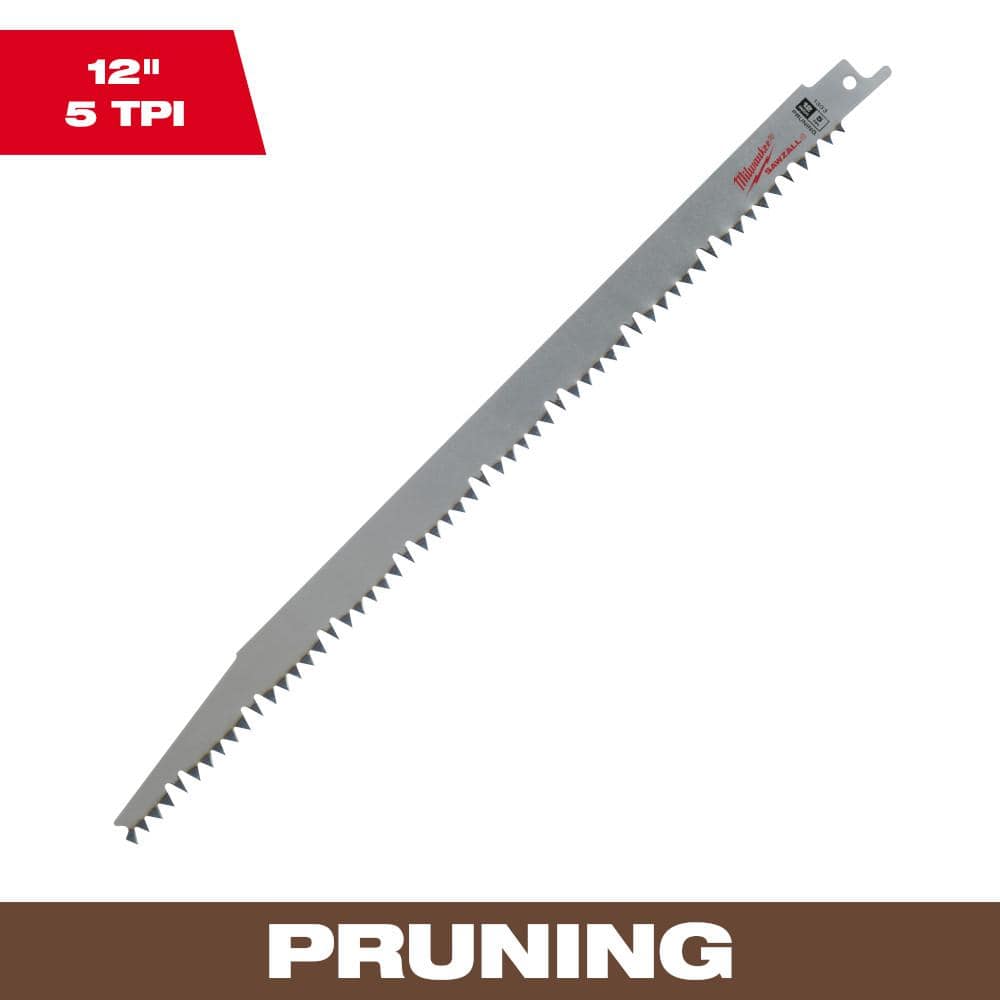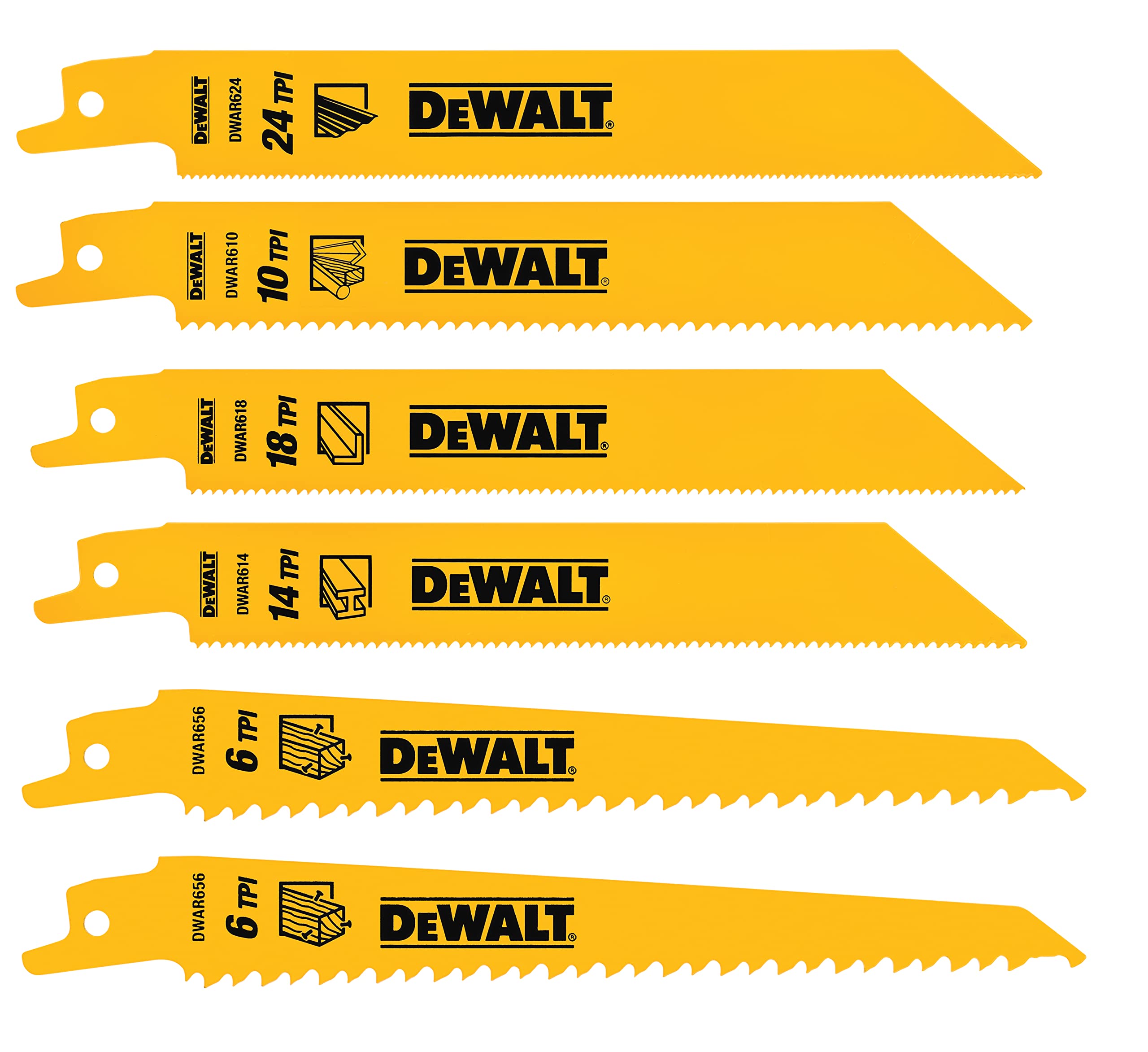Reciprocating saw blades are an essential tool for any DIY enthusiast or professional contractor. But have you ever wondered how long these blades actually are? Well, you’re in the right place! In this article, we’ll explore the lengths of reciprocating saw blades and why it’s important to choose the right size for your projects. So, let’s dive in and unravel the mystery of how long reciprocating saw blades are!
When it comes to reciprocating saw blades, size matters! The length of the blade determines its cutting capacity and the types of materials it can handle. From shorter blades ideal for precision cuts to longer ones designed for deeper cuts, there’s a range of sizes available to suit different tasks. But how do you know which length is right for your project? We’ll cover all that and more in this comprehensive guide.
Whether you’re tearing through wood, plastic, or metal, having the right length reciprocating saw blade can make all the difference. Understanding the various sizes available can help you achieve optimal performance, efficiency, and safety. So, let’s explore the world of reciprocating saw blades together and discover their lengths, uses, and the benefits of choosing the right one for your next project. Let’s get started!

How Long Are Reciprocating Saw Blades? A Comprehensive Guide
Reciprocating saws are handy tools that can make quick work of cutting through various materials. One essential component of a reciprocating saw is the blade. But how long are reciprocating saw blades? In this article, we will delve into the different lengths available and discuss their applications, benefits, and tips for choosing the right blade for your project.
Standard Lengths of Reciprocating Saw Blades
Reciprocating saw blades come in a range of lengths to accommodate different cutting needs. The standard lengths for reciprocating saw blades are 4 inches, 6 inches, 9 inches, and 12 inches. Each length has its advantages and is suitable for specific tasks.
The 4-inch reciprocating saw blade is the shortest option available and is ideal for tasks that require tight and precise cuts, such as cutting through pipes or smaller pieces of wood or metal. On the other end of the spectrum, the 12-inch reciprocating saw blade is the longest and is suitable for tasks that involve cutting through thick materials, such as tree branches or large pieces of metal.
For general-purpose cutting, the 6-inch and 9-inch lengths are the most commonly used reciprocating saw blade sizes. They offer a good balance between maneuverability and cutting capacity, making them versatile options for various applications.
The Applications of Different Blade Lengths
The choice of reciprocating saw blade length depends on the specific task at hand. Understanding the applications of different blade lengths can help you select the right tool for the job.
The shorter 4-inch blade is commonly used for tasks that require working in tight spaces, such as plumbing or electrical work. Its compact size allows for greater maneuverability, making it easier to navigate around obstacles.
The longer 6-inch and 9-inch blade lengths are ideal for general cutting tasks, including demolition work, cutting through lumber, and trimming branches. Their longer reach provides greater cutting capacity and allows for more efficient cutting on larger surfaces.
For heavy-duty applications that involve cutting through thick materials, the 12-inch blade is the go-to option. This length is commonly used in construction, woodworking, and metalworking industries for tasks that require deep cuts and high cutting power.
Benefits of Different Blade Lengths
Each blade length offers its unique set of benefits, making them suitable for specific applications:
- The 4-inch blade’s compact size allows for greater maneuverability, making it ideal for tight spaces and intricate cuts.
- The 6-inch and 9-inch lengths strike a balance between maneuverability and cutting capacity, making them versatile choices for general cutting tasks.
- The 12-inch blade provides a long reach and high cutting power, making it suitable for heavy-duty applications.
By understanding the benefits of different blade lengths, you can select the right tool for your specific cutting needs, ensuring efficient and precise results.
Tips for Choosing the Right Blade Length
When choosing a reciprocating saw blade length, consider the following tips:
- Assess the thickness of the material you will be cutting. Choose a blade that is long enough to cut through the material without maxing out the blade’s teeth.
- Consider the space constraints of your project. If you need to work in tight spaces, opt for a shorter blade length to ensure maneuverability.
- Think about the type of cuts you will be making. If you require precision or intricate cuts, a shorter blade length is more suitable, while a longer blade is better for wider and deeper cuts.
- Take into account the power of your reciprocating saw. Longer blades may require a higher-powered saw to maintain optimal cutting efficiency.
- Lastly, consider the versatility of your chosen blade length. If you are unsure of the specific cutting tasks you will encounter, a 6-inch or 9-inch blade offers a good balance of reach and maneuverability.
By considering these tips, you can confidently choose the right blade length for your reciprocating saw and ensure optimal cutting performance.
Important Factors to Consider When Using Reciprocating Saw Blades
Reciprocating saw blades are versatile tools, but it’s essential to keep a few factors in mind for safe and efficient use:
Cutting Speed
The speed at which you operate the reciprocating saw plays a crucial role in the cutting process. For smoother and cleaner cuts, maintain a moderate and consistent cutting speed.
Blade Material
The material of the reciprocating saw blade affects its durability and performance. Blades made from high-quality materials, such as bi-metal or carbide-tipped, tend to have longer lifespans and can withstand more demanding cutting tasks.
Blade Teeth Per Inch (TPI)
The TPI refers to the number of teeth on the blade per inch. Blades with higher TPI values provide cleaner cuts on materials like wood, while lower TPI values are more suitable for cutting through metal or demolition work.
Blade Maintenance
Proper blade maintenance is crucial for prolonging the lifespan of your reciprocating saw blades. Clean the blades after each use, inspect them for any signs of wear or damage, and replace them as needed.
Conclusion
Reciprocating saw blades come in various lengths to suit different cutting needs. From the compact 4-inch blade for precise cuts to the long 12-inch blade for heavy-duty applications, each length offers its own advantages. By considering the specific task, space constraints, and desired cutting outcomes, you can confidently choose the right blade length for your reciprocating saw. Remember to also consider factors such as cutting speed, blade material, TPI, and blade maintenance for safe and optimal performance. With the right blade length and proper care, your reciprocating saw can tackle a wide range of cutting tasks with ease.
Key Takeaways: How Long Are Reciprocating Saw Blades?
- Reciprocating saw blades come in different lengths to suit various cutting tasks.
- The most common lengths range from 6 to 12 inches.
- Longer blades are typically used for heavier-duty tasks and thicker materials.
- Shorter blades are ideal for tight spaces and precision cutting.
- Always check the compatibility of the blade size with your reciprocating saw before use.
Frequently Asked Questions
Welcome to our FAQ section! Here, we’ll answer some common questions related to reciprocating saw blades, providing you with useful information to aid your projects. Read on to find answers to your burning questions!
What is the standard length of reciprocating saw blades?
Reciprocating saw blades come in various lengths, but the standard length ranges from 6 to 12 inches. The choice of blade length depends on the application and the thickness of the material you’re cutting. For general-purpose cutting, a 9-inch blade is commonly used and should work well for most projects. However, if you need to cut through thicker materials, a longer blade, such as a 12-inch one, will be more suitable.
Keep in mind that shorter blades offer better control and maneuverability, making them perfect for handheld tasks. Longer blades, on the other hand, are ideal for reaching into tight spaces or making deeper cuts. Overall, selecting the right length involves considering the material, project requirements, and the level of precision desired.
Can I use longer reciprocating saw blades on a shorter saw?
While it’s generally recommended to use a blade length that matches the size of your reciprocating saw, you can technically use longer blades on a shorter saw with a few considerations. Firstly, ensure that the longer blade does not extend beyond the nose of the saw, as this can inhibit its functionality and potentially cause accidents. Additionally, using longer blades may require you to adjust the shoe or base plate of the saw to maintain stability and control.
However, it’s important to note that using excessively longer blades can lead to decreased cutting performance, increased vibration, and potential damage to the motor. It’s always best to consult the manufacturer’s guidelines or seek professional advice to ensure compatibility and optimal performance.
What materials can reciprocating saw blades cut through?
Reciprocating saw blades are versatile and can cut through a wide range of materials, including wood, metal, plastic, drywall, and even tree branches. For wood cutting, choose blades with fewer teeth per inch (TPI) to ensure faster and more aggressive cuts. For metal cutting, opt for blades with a higher TPI to achieve smoother results.
Moreover, specialized blades are available for specific materials, such as masonry or nail-embedded wood. These blades are designed for enhanced durability, allowing you to effortlessly cut through tougher materials that may damage standard blades. Always match the blade type to the material you’re working with for optimal cutting efficiency.
How do I choose the right reciprocating saw blade for my project?
Choosing the right reciprocating saw blade involves considering several factors. First, identify the material you’ll be cutting to determine if you need a blade suited for wood, metal, or other materials. Next, consider the thickness of the material, as thicker materials may require specialized blades or blades with fewer TPI for more aggressive cuts.
It’s also essential to assess the type of cut you’ll be making, such as a rough or precision cut, as this will impact the choice of blade and the number of teeth per inch. Finally, check the compatibility with your reciprocating saw, ensuring the blade fits securely and is suitable for the saw’s power and speed. Taking these factors into account will help you select the perfect blade for your project.
How often should I replace my reciprocating saw blades?
The lifespan of a reciprocating saw blade can vary depending on factors such as the type of material being cut, the intensity of the project, and the quality of the blade. It’s generally recommended to replace the blade once it becomes dull, worn, or starts to show signs of damage.
If you notice reduced cutting efficiency, increased vibration, or see burning marks on the material, it’s a good indication that the blade needs replacement. Regularly inspect your blades for any signs of wear and tear, and replace them as needed to maintain optimal performance and ensure safety during your cutting tasks.

Summary
Reciprocating saw blades come in different lengths, ranging from 3 inches to 12 inches. The length you choose depends on the task at hand. Shorter blades are ideal for cutting through thin materials, while longer blades are better for thicker materials.
When selecting a reciprocating saw blade, consider the material you’ll be cutting and the depth of the cut you need. It’s important to choose the right blade length to ensure accuracy and efficiency in your cutting tasks. So, whether it’s a small job or a big one, make sure you have the appropriate blade length for the best results.
